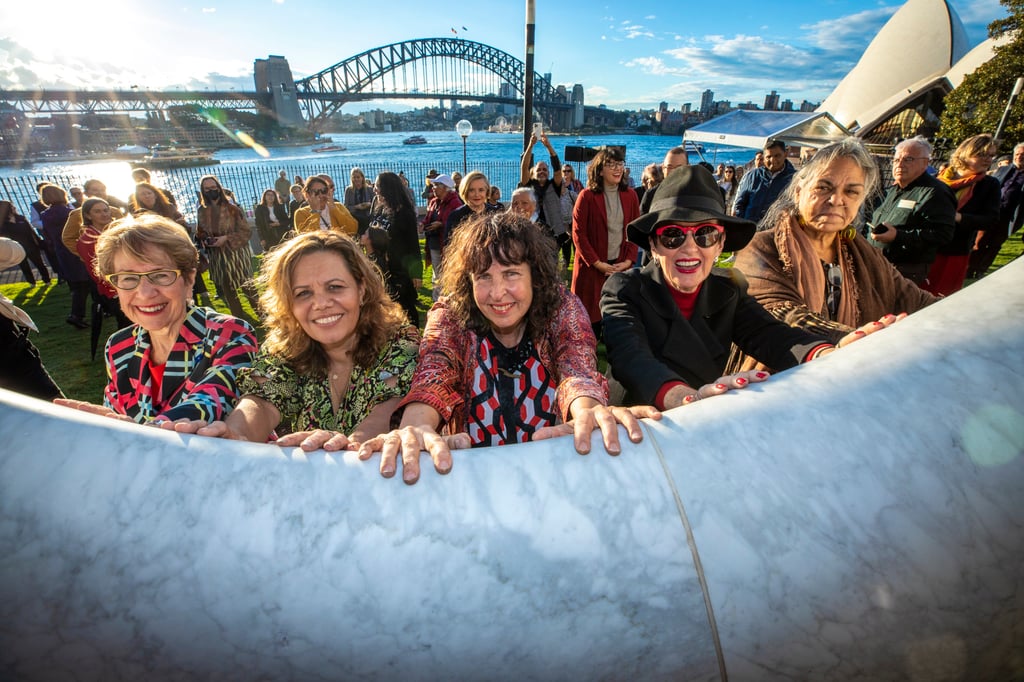Australia’s Aboriginal history celebrated in stunning new Sydney monument overlooking the opera house
- Called Bara, the 6m-tall public art project is a mark of respect for the Gadigal clan of the Eora Nation, the traditional owners of Sydney
- Creator Judy Watson hopes it will act as a modern version of the ancient gathering places alongside the harbour where Gadigal people sat to eat and socialise

Although the iconic Sydney Opera House now dominates Bennelong Point, a new monument highlights the ingenuity of the Aboriginal Australians who lived on this land for thousands of years before it was appropriated by the British.
Placed on a prestigious spot on Sydney Cove overlooking the opera house and Sydney Harbour Bridge, the city’s freshest attraction is a stunning, six-metre-tall, crescent-shaped hook: a sculpture that celebrates the ancient fishing skills of Aboriginal Australians, one of the world’s oldest civilisations.
The harbourside location attracts droves of tourists yet many of the Aboriginal stories that unfolded here are unknown to most visitors, foreign or local. This monument, which was unveiled on May 28, aims to change that.
Called Bara, the Aboriginal name for the shell fishing hook, the monument is a mark of respect for the Gadigal clan of the Eora Nation, the traditional owners of Sydney.

The Eora Nation embraces the city’s 29 Aboriginal clan groups. Before the British brutally colonised Australia in the late 1700s, the Gadigal owned the territory that stretches from the southern coastal edge of Sydney Harbour inland to the suburb now called Petersham. These days this swathe of land is home to Sydney’s downtown area and many of its key attractions, including the opera house, harbour bridge, Art Gallery of New South Wales and Royal Botanic Garden Sydney.